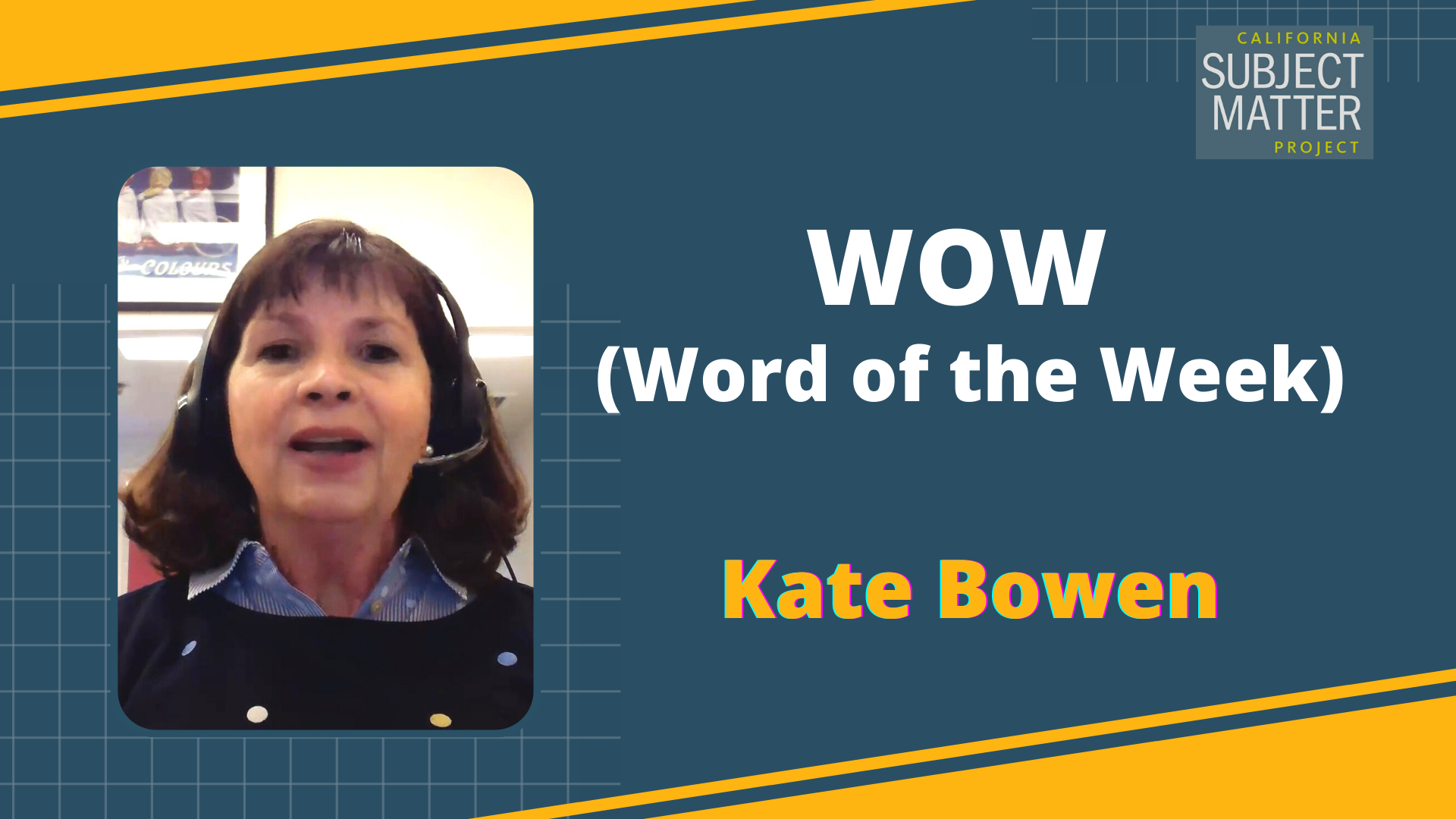Watch the Video
Presenter
Charity Tanaleon, California Arts Project teacher leader and former band director at Norwood Junior High School.
Transcript
Hi, I’m Charity Tanaleon, a teacher leader with the California Arts Project and former band director at Norwood Junior High School in Twin Rivers Unified School District, here to share with you an engaging way to get your music students –students from fourth grade up to high school– to think about how the music they listen to impacts their emotion, and how their emotions contribute to their music listening choices as well as helping you learn more about your students and the current music trend.
The activity I’m sharing with you today is the “Student-Generated Music Playlist”. I want to encourage you to have your students develop their own playlist and share it with you, both as a way to connect with your students and reinforce musical concepts and vocabulary. This activity allows students to discover commonalities that they may have in music genres, artists, or songs with their peers, and may also encourage students to broaden their musical listening repertoire to songs they may never have considered exploring. The Student-Generated Playlist will be songs, pieces, or musical excerpts that students connect with and should be something the student enjoys listening to and are able to provide a rationale to their choices. Even though the instructions to the activity is minimal, this activity is powerful because it has students consider, think and respond to questions about their song choices, and reflect on their emotions.
Start off this activity by asking students, “Please take a few minutes to jot down songs, pieces, music genres, or artists that you enjoy listening to.” After students have done that, then ask, “Do you have a go-to song or songs? A song or musician that you go and listen to when you’re in a bad mood and it energizes you.” If students have a difficult time picking just one song, then provide them the option to jot down more. However, I do recommend capping their song choices to no more than three. Then ask students to choose one emotion that articulates their go-to song. The majority of students will often choose happy or another synonym of happy. This is when you want to provide this blank chart to the students. Remind students to provide the performing artist to the version of their song choice and to provide English translations for any song in another language. Also let them know that they have the choice over what they think the emotion looks like. Students can use emojis bit emojis or images they think depict that particular emotion. What is important is that students provide a reason to their choices beyond the “because…, uh, because I just like it?!”.
Assign another emotion of your choice. I’m curious about what students think the opposite of happy sounds like to them, so the next emotion that I assign is sad. The students complete the remainder of the chart with them deciding if they want to choose songs first and relate them to emotions, or if they want to think about an emotion and then relate it to a song. I recommend that you provide a list of emotions that students can choose from so they don’t get stuck. You can do a Google search and type “human emotion list”, however I’ll provide a link to the emotions list that I would use. I also found it helpful to tell students, “I appreciate you sharing your song choices, however I want you to be mindful about the songs and share ones that your parent or guardian teacher and principal would approve of if I shared the link of your song choice with them.” I’m mindful about parents and guardians not wanting their student exposed to music with profanity or sexual references.
I encourage you to have students discuss and share their song selections with a peer partner and, afterwards, write down their rationales to their song and image selections. Ask students, “what is it about this song from your playlist that engages you? What hooks you into it? What does this song mean to you and your life right now?” Since this activity is done at the beginning of the year, students will have a limited musical vocabulary, hence I suggest having students include at least two musical elements that were discussed in class. Here are some music vocabulary that you may want to go over with the class prior to this activity, so they can include it in their rational. I’ve included a link to these words and their definitions.
Be sure to share your song selection and playlist with your students too so they get a chance to know you and your musical tastes. Here are four extension questions that may assist with getting your students to dive deeper in their musical and emotional exploration. When do you listen to music? Are there certain activities where you put on specific types of music? Is it your emotion that influences what you listen to, or do you decide what you want to listen to based on your emotion? What would your music playlist include if you were to create a live soundtrack for your daily life?
So there you have it. Again, my name is Charity Tanaleon and I really do hope that you utilize this strategy to engage with your students and really build a wonderful rapport with them.
Accompanying Materials & Resources
- Quick Guide: Connecting to Emotions (PDF – 1 Page)
- Connecting to Emotions Using a Student-Generated Playlist – Emotional Music Template (PDF)
- Connecting to Emotions Using a Student-Generated Playlist – Music Vocabulary (PDF)
- Connecting to Emotions Using a Student-Generated Playlist – Feelings Wheel (PDF)



